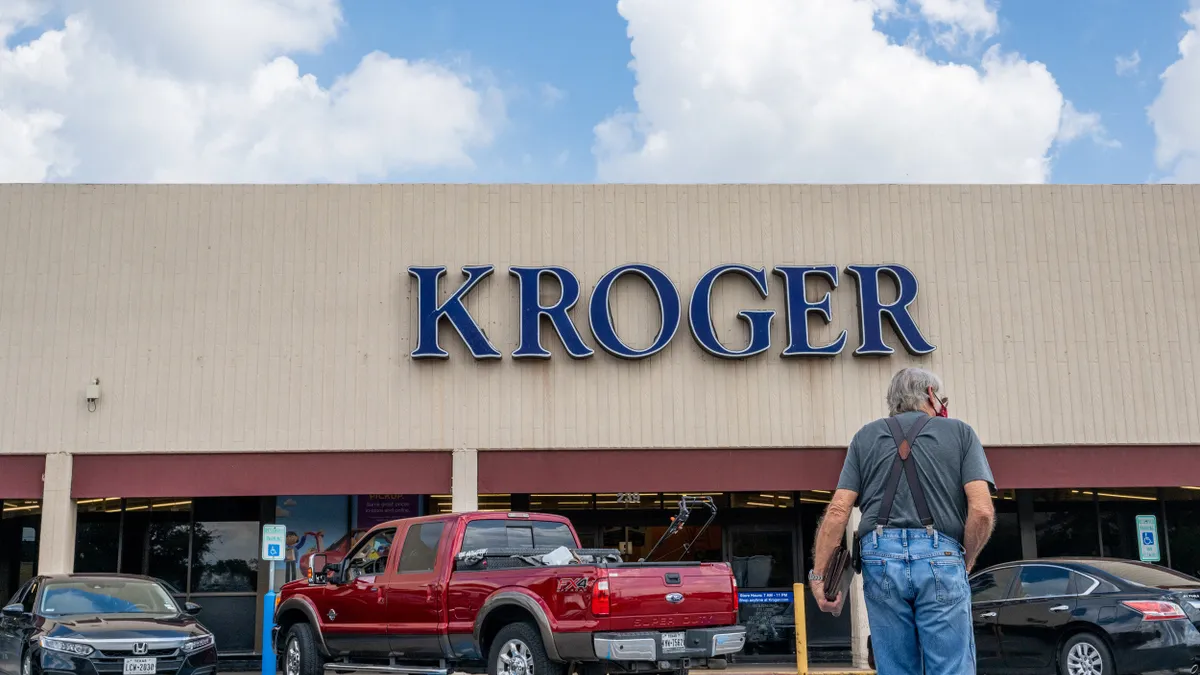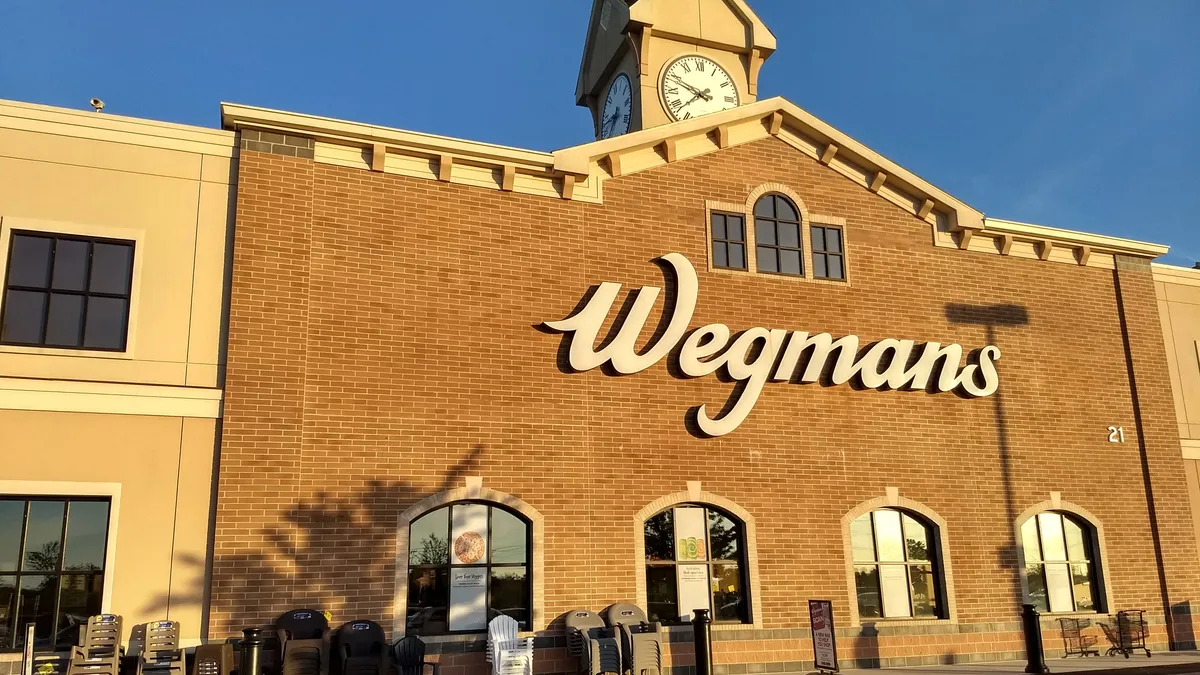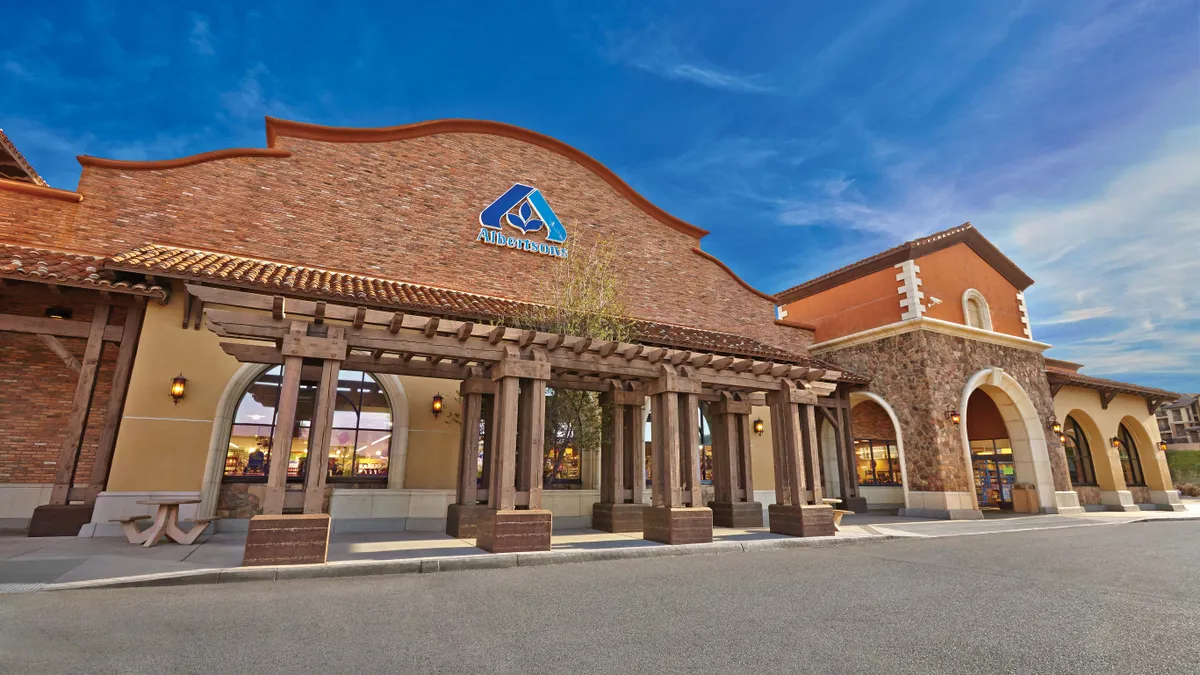Pardon the Disruption is a new column from Grocery Dive that looks at the forces shaping food retail.
As the capital of the Confederacy during the Civil War, Richmond, Virginia, was a prized target of the Union Army.
In early April 1865, after nearly a year of trying to take the city, General Ulysses S. Grant and his forces finally broke through Robert E. Lee’s line. Union soldiers marched triumphantly through the streets as Confederate troops and officials fled. One month later, the war ended.
These days, a different sort of battle is taking shape in Richmond — a grocery battle. During the past several years, a slew of major grocery chains have streamed into this metropolitan region of 1.3 million. Kroger came to town after a local chain faltered. So did Martin’s, an Ahold brand that ultimately failed. Pretty soon, Aldi, Trader Joe’s, Whole Foods and The Fresh Market had joined the fray alongside longtime players like Food Lion, Costco, Walmart and independents like Tom Leonard’s. In the past few years, Publix and Wegmans have also descended on Richmond, along with discounter Lidl.
I had a chance to visit Richmond late last year, and it truly is — as industry observers had told me before I traveled — over-stored. Actually, over-stored might be understating it. Jam packed might be the better phrase. Between 2007 and last year, the amount of grocery real estate more than doubled, from just under 1.2 million square feet to more than 2.5 million square feet of total store space, according to commercial real estate firm CBRE Richmond.
Roll along the stretch of Highway 250 in the center of Short Pump, a suburb where much of the growth has concentrated, and you’ll pass by more than 10 supermarkets in two miles.
“Right now, Richmond is like Game of Thrones. It is a bloodbath,” Bob Kelley, former director of operations at Ukrop’s Super Markets, told me. Ukrop's exited the market in 2010, and Kelley now works as an industry consultant and professor at Virginia Commonwealth University.
You can see it inside the stores, where low-price signage practically jumps into your shopping cart. And the prices truly are something to behold — especially for the staple goods meant to draw customers in. At Wegmans, a retailer not known for its price competitiveness, I spotted a carton of three dozen eggs for 99 cents, while a gallon of fat-free milk retailed for $1.82. At a nearby Kroger, a dozen medium eggs cost 45 cents, while discounter Aldi offered them for 33 cents in one of its 10 newly remodeled stores in the area. Topping them all was Lidl, the newest kid on the block, with a dozen large eggs for a meager 30 cents.
If it’s a tough city for chain competitors, it’s absolutely brutal for independent operators. How brutal? Despite having a big name and a store manager with more than four decades of experience, Big Apple Supermarket in suburban Henrico County lasted just five months. The store opened in March and closed down this month.
One independent that’s standing tall among the giants is Tom Leonard’s Farmers Market. Opened in 2004 by the son of famous Northeastern grocer Stew Leonard, the store focuses on a limited assortment of fresh products. It's also, like Stew Leonard’s locations, laid out as a single aisle that winds through every department.
I chatted with Tom Leonard, who conceded Richmond is a really tough place to run a grocery store.
“I think this is the last place on the planet I'd want to open a supermarket,” he said. When the neon Whole Foods sign lit up across the street from his store for the first time 10 years ago, he panicked. Standing in the parking lot, he called his dad, who told him to turn around, face his store and spend all of his time focusing on making it better.
That turned out to be a crack piece of advice. Nowadays, Tom Leonard’s sets itself apart with its meat and seafood department, a farm-stand feel and a robust deli counter that holds court from the middle of the store.
So why is Richmond’s grocery scene bursting at the seams? Aside from favorable demographics and density in the suburbs of Short Pump and Midlothian, where most of the growth has taken place, retailers have rushed to fill a void left by Ukrop's. The hometown grocer was beloved for its customer service and outstanding prepared foods, but it had fallen behind the times. Its 25 stores weren’t open on Sundays and didn’t sell alcohol.
“This was not an act of desperation, but the market was changing and they opted to get out,” Jeffrey Metzger, publisher of Food World, a trade publication that covers the Mid-Atlantic grocery market, told me.
Ukrop’s sold its stores to Ahold’s Martin’s banner, but the company made a hash of it, failing to replicate the store experience and high level of customer service that Ukrop’s had. In 2016, after merging with Delhaize, Royal Ahold decided to sell all of its Richmond-area Martin’s stores as part of the agreement to divest overlapping locations between the two companies.
“Right now, Richmond is like Game of Thrones. It is a bloodbath.”

Bob Kelley
Consultant, professor and former director of operations at Ukrop's
Publix, which bought 10 of those stores, would seem the heir apparent to Ukrop’s legacy. But the company hasn’t quite caught on with local customers. I talked to one former Ukrop's devotee in the parking lot of a Short Pump Publix who said the Florida-based grocer just didn’t feel the same as Ukrop’s. The numbers bear this out: In Food World’s recent market share rankings, Publix’s eight stores placed 10th — one spot behind Wegmans, which operates just two stores in the city.
The other players in this Virginia battle royale include incumbents as well as long-time players — a heady mix shaped by the industry ups and downs that are familiar to so many other markets. Kroger, which operates 18 stores in Richmond and came to the market in 2000 after Hannaford exited, claims the number one market share spot along with Walmart, which built its first area store in 1996 during its breakneck expansion period.
Third place in the rankings belongs to Food Lion, which has 48 stores and recently finished updating all of them in line with its “Fresh, Easy and Affordable” initiative. That chain was tabbed as low-hanging fruit for the likes of Publix and Lidl, but it’s managed to stand firm. Walking around a store in Midlothian, I was impressed by the updated signage, the grab-and-go prepared foods section and the walk-in produce coolers.
“Here I thought Food Lion was going to get creamed by Lidl and Aldi, but they seem to be holding their own,” Kelley said.
In general, the United States is over-stored and in a state of flux. And while there aren’t that many new stores being built — with the exception of a few chains — markets will keep changing as stores close and chains go bankrupt.
Although Richmond’s example trends toward the extreme, battles like this are playing out in markets across the country. In Chicago, the demise of Dominick’s led to a feeding frenzy that remade the competitive landscape. In southern California, Hispanic chains and Aldi are putting pressure on conventional players.
Who will win in Richmond? It’s hard to say, but the market will surely yield insights about the broader industry battle for years to come.





















